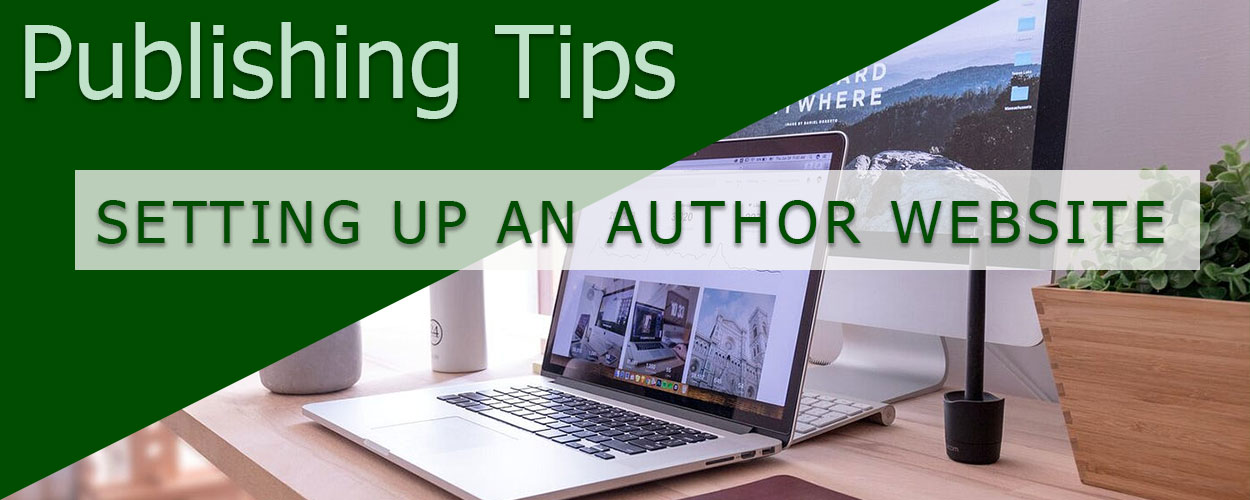

Posted: May 23, 2023
It’s pretty self explanatory, but an author website is the webpage for your brand. It will have a page for people to learn more about you, for your books, and for your blog (if you have one).
A website is one of the first things that a business needs, especially one without a physical storefront like authors are. If you want to expand your book’s reach beyond your immediate circle, an internet presence is key. Social media for the most part is a great place to start. A Facebook page is almost there, but an entire website that fans can visit to learn more about you and your books without distractions is the best method.
With this, you can maintain complete control of what they see, if they’ll be bombarded with ads, and where they can buy your books.
Authors typically include most of the following pages on their website:
If you already know how to create a website from scratch, that’s amazing! If not, no worries. You have other options. The first and foremost being to use a free website builder when you’re just starting out. You may scowl at the idea of using a free site like Wix or WordPress, but no one is going to fault you as a self-published author with their newly made website.
However, if you’re dead set on your website being the best it can be right from the start, consider hiring a professional to build and even manage it for you.
Creating a free website is easy enough, but you’ll be stuck with a browser extension like “wordpress.com” or “wix.com” or something else. When you’re just starting out, this is entirely okay—don’t splurge right away without considering all your options. The actual best way to create a website is either to build it yourself (if you know how to make a good one) or to hire someone to build a professional website for you and upload it onto your own server.
Personally, I regret paying so much for a business account on WordPress. While it does the job, there are better options, so at the end of this year (2023), when the yearly contract is up, I will be reuploading my website properly.
It can cost several hundred dollars to have a professional website done and accessible, so make sure to do your research ahead of time. I highly recommend also planning what it’s going to look like so it’s professional and clean right from the get-go. Nothing’s worse for business than a sloppy website.
To do that, look at other author sites and make note of what makes them unique. What does the website tell you about them? Is it clean? modern? naturalistic? technological? Design your website so it tells readers what your books are about before they even read the first blurb.
A mailing list is just as important as posting articles on a blog—if not more so—to keep your fans in the know. Using services like MailChimp, Brevo, or Mailerlite are extremely helpful as they will filter through your emails (making them more manageable) and will autogenerate welcome messages for people who sign up.
Keep in mind that you shouldn’t immediately bombard your subscribers with sales pitches or “buy my book!” messages. They won’t like that and are likely to unsubscribe from your mailing list if that’s all you can offer them. Start by giving them free samples such as chapter samples, sneak peeks, or free short stories related to your book(s). These are great ways to get them interested, invested, and informed in your work. It also helps them decide if they like your work or not—if it’s a good match for them. After a few emails (maybe three or four), you can send them links for buying your books.
If you’re someone who has trouble coming up with new things to share online (to social media or otherwise) a good strategy is to keep a schedule and a list of possibilities. In a notebook, record ideas of things to add each month (if you’re going for a monthly thing), or whenever a new idea hits you. Always be working on new things to share, especially between writing new books. If you find that you’re too busy when life hits you, take every chance available to quickly jot things down.
If you can’t work on a novel, write a short story instead. Not only is it a shorter process, but the sense of accomplishment will spur you forward with positivity.
Being an author, the work is never done, and the pay is hardly ever good, but if this is your dream, you know to never give up.
From Pen to Published
Budgeting for Book Publication—Make a Plan
Navigating the World of Self-Publishing
Free Promo—Strategies to Promote Your Book
Tigerpetal Press is a small book press dedicated to publishing local authors and poets.